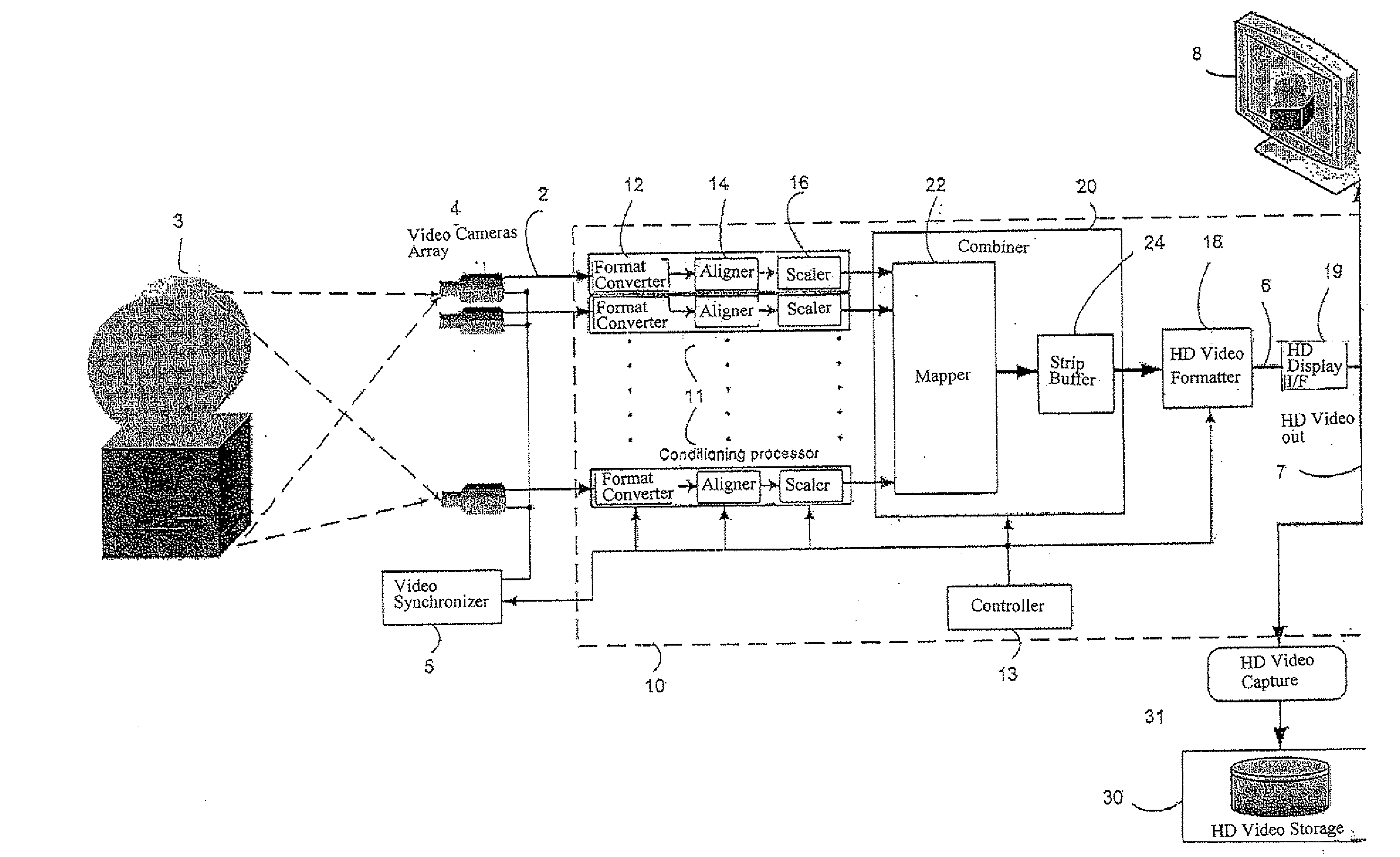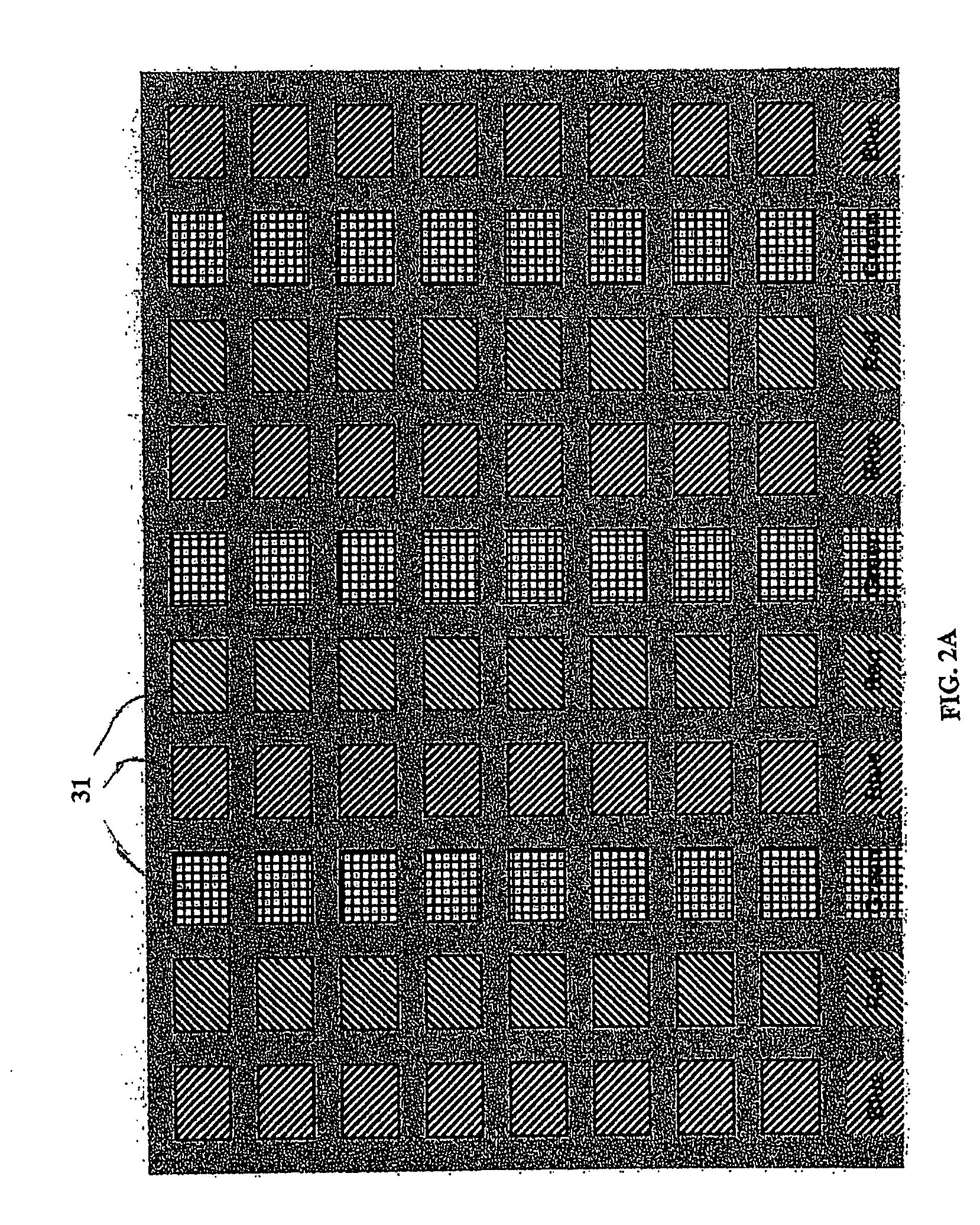Real-time video signal interweaving for autostereoscopic display
a real-time video signal and display system technology, applied in the field of real-time autostereoscopic display systems, can solve the problems of requiring a large capacity, bulky display subsystems, and requiring precise alignment of display devices, so as to achieve efficient storage space
- Summary
- Abstract
- Description
- Claims
- Application Information
AI Technical Summary
Benefits of technology
Problems solved by technology
Method used
Image
Examples
Embodiment Construction
[0035]FIG. 1 depicts, in a schematic block diagram, a preferred embodiment of the invention in a typical configuration. Real-time Multiview Video to Autostereoscopic Display Converter (RMVADC) 10 accepts a plurality of video signals 2 and converts them, in real time, to a high-definition (HD) video signal 6 that is applicable to an autostereoscopic display device 8. The plurality of video signals 2, which may be in any suitable format, represent views, or projection images, of an object or a scene 3 (the two terms to be used interchangeably) from respective directions and are accordingly referred to herein as projection video signals. They usually arrive simultaneously from one or more video sources. In the configuration depicted in FIG. 1 the video sources are respective video cameras 4, disposed at certain distances from each other and so as to image the object 3 from respective directions. The video sources are, however, not part of the invention and may, in general, be of any ty...
PUM
 Login to View More
Login to View More Abstract
Description
Claims
Application Information
 Login to View More
Login to View More - R&D
- Intellectual Property
- Life Sciences
- Materials
- Tech Scout
- Unparalleled Data Quality
- Higher Quality Content
- 60% Fewer Hallucinations
Browse by: Latest US Patents, China's latest patents, Technical Efficacy Thesaurus, Application Domain, Technology Topic, Popular Technical Reports.
© 2025 PatSnap. All rights reserved.Legal|Privacy policy|Modern Slavery Act Transparency Statement|Sitemap|About US| Contact US: help@patsnap.com



